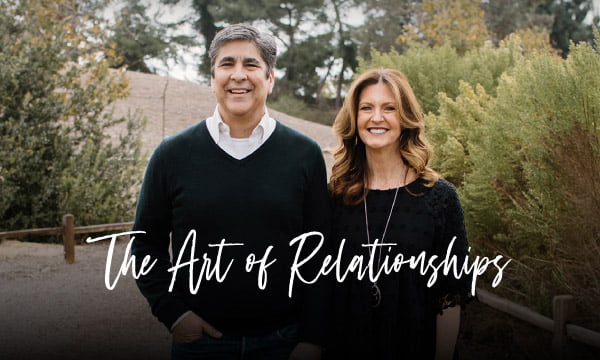How to Make Anger Your Ally

Nothing can improve your relationship more than learning how to control anger outbursts. For example, do you find yourself losing your temper with your loved ones? Do you yell at your kids more often than you’d like to admit? Or, do you get resentful towards your spouse and lash out with sarcastic remarks? You might even be swearing to high-heaven inside your mind— muttering words under your breath you’d never say aloud.
When anger festers, it doesn’t always come out as loud screaming. It can surface as vindictive digs, passive-aggressive swipes, or a full-blown tantrum.
If you’re like most people, you don’t want to feel this way. But, struggling to figure out how to control anger outbursts can be difficult. As a counselor and coach for over 20 years, I’ve helped numerous people overcome their internal angst.
Here’s the trick. The way to control anger outbursts is NOT to silence your thoughts or beat yourself up for feeling angry inside. In fact, berating yourself will only make the problem worse. Instead, the way to control anger outbursts is to:
Make anger your ally.
How do you make anger your ally? Use the following 5 steps:
Step 1. Notice the signs of anger before it erupts.
Anger almost always has a “tell” located somewhere in your body. You might start feeling tense, like your blood pressure is rising, or you might feel it in your head, like it’s going to explode. Some of you might notice hostile words forming on the tip of your tongue or angry, critical self-talk in your mind.
When you notice those signs, your body is headed straight toward the “fight” part of the “fight/flight” response. Some part of you is registering “Danger!” And, that means your whole body is preparing to kick into gear to fight that danger off.
This is a helpful process when you are in real physical danger and need to fight for your safety. But, oftentimes the angry “fight” response kicks in when we are hurt, saddened, or frustrated by the people we love. In those cases, we need a better strategy.
Step 2. Take a time-out or get physical space.
As you notice the signs of anger, see if you can interrupt the path you are headed down BEFORE you explode on someone else. You can do this in a number of ways:
-
Use a code word to communicate, such as “I need a timeout.”
-
Take several deep breaths to slow down the automatic fight/flight response
-
Physically change the position of your body to release tension
-
Let your anger out verbally in a quiet, contained space by yourself.
-
Go for a run or engage your body in a way that gives the anger expression
As you interrupt the initial “fight” response, you aren’t denying yourself the emotion. Instead, you “control” the anger outburst by identifying how it shows up in your body. You can then create better options for how to respond with your loved one.
Step 3. Give voice to your anger in writing or with a third party, such as a counselor, pastor, or friend.
Anger burns like a fire and can easily be fueled. It needs to be witnessed without being further ignited. If you’re able to journal from the perspective of your anger, write out what you feel. No one else has to see. Or, ask a friend if they’ll sit with you by the fire of your anger, without adding fuel to it. Here are some examples of the difference:
Adding Fuel: “I can’t believe he did that to you. That jerk!”
Sitting with: “I’m so sorry this is happening to you.”
Adding Fuel: “Those kids are awful. Why can’t they just get it together?
Sitting with: “I get it. It’s hard. I’m here for you.”
As you bear witness to your anger and all that it contains, it will start to burn less hot and become more like a glowing ember. Depending on the severity of the injury, this process might happen fast. Or, this process might need to be repeated numerous times over months or years.
The goal of giving voice to your anger is not to stay in it, nor is it to make it go away. As you give voice to your anger in a healthy, contained way, it will start to trust you. Anger is there to protect you from danger, remember? Learning how to control anger outbursts means learning to understand the hurt your anger might be signaling.
Step 4. Connect with the vulnerable feelings underneath your anger.
As your anger softens a little, you’ll start to notice other emotions you’re feeling underneath it. Anger almost always masks a more vulnerable feeling, such as pain, exhaustion, sadness, or fear. Notice how the angry outbursts below can be re-framed to identify the root emotions. For example:
“You are ruining everything!” might be connected to a feeling of “This behavior is extremely hurtful to me.”
“Why can’t you just behave!” might be protecting fear, such as, “I’m terrified that I’m not up for this parenting challenge” or exhaustion, such as, “I am simply out of gas right now.”
“I’m fine. Just fine,” might be masking what you really feel, “I’m not fine at all. I’m actually about to break.”
In my counseling work, I’ve seen it time after time. Learning how to control anger outbursts means learning to face the deeper feelings of vulnerability. It’s those feelings – the vulnerable ones – that hold the keys to your success. Keeping them down or ignoring them is the road to nowhere, and I don’t want you to make this mistake.
Step 5. Speak assertively on behalf of what you need.
Once you have taken the first four steps, you will be more equipped to speak up bravely on behalf of what you need. Instead of having an angry outburst, you can speak up assertively.
Assertiveness is a way of advocating for yourself by stating what you feel and what you need. It’s not about blaming and bullying others. And, it’s not about pretending you’re fine. It’s one of the most important communication skills you can learn.
See the chart below for examples of what it can look like to speak up assertively on behalf of your anger:
Learning how to control anger outbursts is a process you can learn. As you understand the root cause of your anger, you’ll gain clarity and courage. You’ll have a better sense of what’s really going on underneath an angry outburst.
As you understand yourself and grow in self-awareness, you’ll gain confidence. Then, you’ll learn to speak up assertively for what you need.
Imagine how good it will feel when anger is no longer the boss of you.



